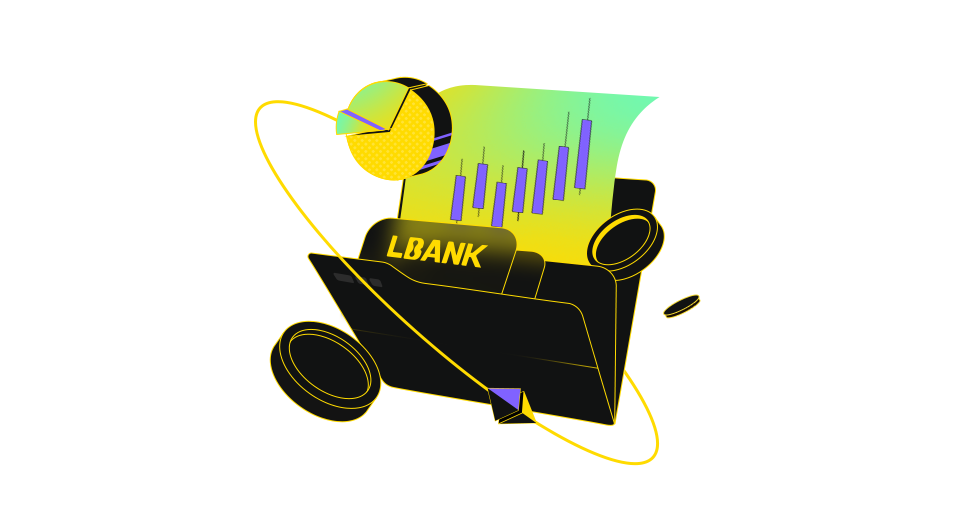Are there different segments or sub-communities within the broader crypto community?
2025-04-18
Beginners Must Know
"Exploring Diverse Sub-Communities: Key Segments Every Crypto Beginner Should Understand."
The Cryptocurrency Community: Understanding Its Diverse Segments and Sub-Communities
The world of cryptocurrency is far from monolithic. It is a vibrant and ever-evolving ecosystem made up of various segments and sub-communities, each with distinct characteristics, investment strategies, and levels of expertise. Whether you're a newcomer curious about Bitcoin or a seasoned trader exploring decentralized finance (DeFi), understanding these groups can help you navigate the crypto landscape more effectively.
### The Different Segments of the Crypto Community
#### 1. Beginners – The Newcomers
Beginners are those who have just entered the crypto space, often with limited technical knowledge about blockchain technology. They typically start by investing in well-known cryptocurrencies like Bitcoin (BTC) and Ethereum (ETH) due to their mainstream recognition.
Characteristics:
- Limited understanding of blockchain fundamentals.
- Prefer simple investment strategies, avoiding complex trading techniques.
- Tend to be risk-averse, often hesitant to explore volatile or lesser-known assets.
Recent Developments:
The rise of educational platforms, YouTube channels, and beginner-friendly exchanges like Coinbase and Binance has made it easier for newcomers to enter the market. Many beginners also rely on social media and online forums to gather information before making their first investments.
#### 2. Intermediate Investors – The Explorers
Intermediate investors have moved past the basics and are beginning to diversify their portfolios. They understand fundamental blockchain concepts but may not yet engage in highly technical strategies like smart contract development.
Characteristics:
- Moderate grasp of blockchain technology and market trends.
- Invest in a mix of established and emerging altcoins.
- More open to risk but still cautious about extreme volatility.
Recent Developments:
The growth of the altcoin market has provided intermediate investors with more opportunities for diversification. Additionally, the rise of DeFi platforms has attracted this group, offering them higher yields through staking, liquidity provision, and other decentralized financial instruments.
#### 3. Advanced Investors – The Experts
Advanced investors possess deep technical knowledge and often engage in complex trading strategies. They are well-versed in smart contracts, decentralized applications (dApps), and blockchain development.
Characteristics:
- High proficiency in blockchain mechanics, including coding and protocol analysis.
- Use advanced trading techniques such as arbitrage, derivatives, and yield farming.
- Comfortable with high-risk, high-reward investments.
Recent Developments:
The expansion of smart contract platforms like Ethereum (Solidity) and Polkadot (Rust) has drawn advanced investors into development and governance roles. Yield farming and other DeFi strategies have also become popular among this group, offering lucrative returns for those willing to navigate the complexities.
#### 4. Whales and Institutional Investors – The Market Movers
Whales are high-net-worth individuals or entities that hold substantial amounts of cryptocurrency. Institutional investors, such as hedge funds and corporations, also fall into this category, often influencing market trends with large transactions.
Characteristics:
- Control significant portions of market liquidity.
- Engage in large-scale trades, sometimes impacting price movements.
- Have high risk tolerance and access to sophisticated trading tools.
Recent Developments:
The entry of institutional investors—such as Tesla, MicroStrategy, and major financial institutions—has brought increased legitimacy and stability to the crypto market. Regulatory developments are also shaping how whales and institutions operate, with clearer guidelines emerging in key markets like the U.S. and Europe.
### Factors Shaping the Crypto Community
Market Capitalization and Growth
The total crypto market cap has seen exponential growth, surpassing $2 trillion in 2021. This expansion has been fueled by the rise of altcoins, DeFi platforms, and non-fungible tokens (NFTs).
Regulatory Environment
Governments worldwide are increasingly scrutinizing cryptocurrencies. While some countries embrace digital assets with favorable policies, others impose strict regulations, creating uncertainty for investors.
Technological Advancements
Blockchain technology continues to evolve, with improvements in scalability (e.g., Ethereum 2.0) and transaction efficiency (e.g., Layer 2 solutions). These advancements attract more participants, from developers to traders.
### Potential Challenges and Risks
Market Volatility
Cryptocurrencies are notorious for their price swings. Sudden crashes or surges can lead to significant gains or losses, making risk management essential.
Regulatory Uncertainty
Changing laws can disrupt markets. For example, crackdowns on crypto exchanges in certain countries have caused temporary price drops and reduced trading activity.
Security Risks
Despite blockchain’s security features, risks like exchange hacks, phishing scams, and smart contract vulnerabilities remain persistent threats.
### Conclusion
The cryptocurrency community is a diverse and multifaceted space, encompassing everyone from curious beginners to institutional power players. Each sub-community plays a unique role in shaping the market’s direction, driven by varying levels of expertise, risk tolerance, and investment strategies.
Recent trends, such as the growth of DeFi, institutional adoption, and technological innovations, continue to redefine the landscape. However, challenges like volatility and regulatory scrutiny remind us that the crypto world is still maturing.
For anyone looking to engage with cryptocurrencies, understanding these segments is crucial. Whether you're just starting or are a seasoned trader, recognizing where you fit in this ecosystem can help you make more informed decisions and navigate the market’s complexities with greater confidence.
The world of cryptocurrency is far from monolithic. It is a vibrant and ever-evolving ecosystem made up of various segments and sub-communities, each with distinct characteristics, investment strategies, and levels of expertise. Whether you're a newcomer curious about Bitcoin or a seasoned trader exploring decentralized finance (DeFi), understanding these groups can help you navigate the crypto landscape more effectively.
### The Different Segments of the Crypto Community
#### 1. Beginners – The Newcomers
Beginners are those who have just entered the crypto space, often with limited technical knowledge about blockchain technology. They typically start by investing in well-known cryptocurrencies like Bitcoin (BTC) and Ethereum (ETH) due to their mainstream recognition.
Characteristics:
- Limited understanding of blockchain fundamentals.
- Prefer simple investment strategies, avoiding complex trading techniques.
- Tend to be risk-averse, often hesitant to explore volatile or lesser-known assets.
Recent Developments:
The rise of educational platforms, YouTube channels, and beginner-friendly exchanges like Coinbase and Binance has made it easier for newcomers to enter the market. Many beginners also rely on social media and online forums to gather information before making their first investments.
#### 2. Intermediate Investors – The Explorers
Intermediate investors have moved past the basics and are beginning to diversify their portfolios. They understand fundamental blockchain concepts but may not yet engage in highly technical strategies like smart contract development.
Characteristics:
- Moderate grasp of blockchain technology and market trends.
- Invest in a mix of established and emerging altcoins.
- More open to risk but still cautious about extreme volatility.
Recent Developments:
The growth of the altcoin market has provided intermediate investors with more opportunities for diversification. Additionally, the rise of DeFi platforms has attracted this group, offering them higher yields through staking, liquidity provision, and other decentralized financial instruments.
#### 3. Advanced Investors – The Experts
Advanced investors possess deep technical knowledge and often engage in complex trading strategies. They are well-versed in smart contracts, decentralized applications (dApps), and blockchain development.
Characteristics:
- High proficiency in blockchain mechanics, including coding and protocol analysis.
- Use advanced trading techniques such as arbitrage, derivatives, and yield farming.
- Comfortable with high-risk, high-reward investments.
Recent Developments:
The expansion of smart contract platforms like Ethereum (Solidity) and Polkadot (Rust) has drawn advanced investors into development and governance roles. Yield farming and other DeFi strategies have also become popular among this group, offering lucrative returns for those willing to navigate the complexities.
#### 4. Whales and Institutional Investors – The Market Movers
Whales are high-net-worth individuals or entities that hold substantial amounts of cryptocurrency. Institutional investors, such as hedge funds and corporations, also fall into this category, often influencing market trends with large transactions.
Characteristics:
- Control significant portions of market liquidity.
- Engage in large-scale trades, sometimes impacting price movements.
- Have high risk tolerance and access to sophisticated trading tools.
Recent Developments:
The entry of institutional investors—such as Tesla, MicroStrategy, and major financial institutions—has brought increased legitimacy and stability to the crypto market. Regulatory developments are also shaping how whales and institutions operate, with clearer guidelines emerging in key markets like the U.S. and Europe.
### Factors Shaping the Crypto Community
Market Capitalization and Growth
The total crypto market cap has seen exponential growth, surpassing $2 trillion in 2021. This expansion has been fueled by the rise of altcoins, DeFi platforms, and non-fungible tokens (NFTs).
Regulatory Environment
Governments worldwide are increasingly scrutinizing cryptocurrencies. While some countries embrace digital assets with favorable policies, others impose strict regulations, creating uncertainty for investors.
Technological Advancements
Blockchain technology continues to evolve, with improvements in scalability (e.g., Ethereum 2.0) and transaction efficiency (e.g., Layer 2 solutions). These advancements attract more participants, from developers to traders.
### Potential Challenges and Risks
Market Volatility
Cryptocurrencies are notorious for their price swings. Sudden crashes or surges can lead to significant gains or losses, making risk management essential.
Regulatory Uncertainty
Changing laws can disrupt markets. For example, crackdowns on crypto exchanges in certain countries have caused temporary price drops and reduced trading activity.
Security Risks
Despite blockchain’s security features, risks like exchange hacks, phishing scams, and smart contract vulnerabilities remain persistent threats.
### Conclusion
The cryptocurrency community is a diverse and multifaceted space, encompassing everyone from curious beginners to institutional power players. Each sub-community plays a unique role in shaping the market’s direction, driven by varying levels of expertise, risk tolerance, and investment strategies.
Recent trends, such as the growth of DeFi, institutional adoption, and technological innovations, continue to redefine the landscape. However, challenges like volatility and regulatory scrutiny remind us that the crypto world is still maturing.
For anyone looking to engage with cryptocurrencies, understanding these segments is crucial. Whether you're just starting or are a seasoned trader, recognizing where you fit in this ecosystem can help you make more informed decisions and navigate the market’s complexities with greater confidence.
Related Articles
How are RWAs different from traditional financial assets?
2025-05-22 10:16:47
How does DeFi differ from traditional finance systems?
2025-05-22 10:16:47
Can you elaborate on how equitable distribution is achieved in the new tokenomic model?
2025-05-22 10:16:46
What implications does this collaboration have for blockchain gaming acceptance?
2025-05-22 10:16:46
How does U.S. Steel Corporation's performance compare to its competitors in light of the new price target?
2025-05-22 10:16:46
Are there fees associated with different deposit methods on Binance?
2025-05-22 10:16:45
How complex are DeFi protocols involved in yield farming as mentioned in the research news about CoinGecko's Earn Platform?
2025-05-22 10:16:45
How important does Buterin consider institutional adoption of cryptocurrencies?
2025-05-22 10:16:45
What types of insights or findings should be highlighted during the analysis of news articles?
2025-05-22 10:16:44
What role do stablecoins play in facilitating transactions within the cryptocurrency ecosystem?
2025-05-22 10:16:44
Latest Articles
How does DeFi differ from traditional finance systems?
2025-05-22 10:16:47
How are RWAs different from traditional financial assets?
2025-05-22 10:16:47
Can you elaborate on how equitable distribution is achieved in the new tokenomic model?
2025-05-22 10:16:46
What implications does this collaboration have for blockchain gaming acceptance?
2025-05-22 10:16:46
How does U.S. Steel Corporation's performance compare to its competitors in light of the new price target?
2025-05-22 10:16:46
How complex are DeFi protocols involved in yield farming as mentioned in the research news about CoinGecko's Earn Platform?
2025-05-22 10:16:45
Are there fees associated with different deposit methods on Binance?
2025-05-22 10:16:45
How important does Buterin consider institutional adoption of cryptocurrencies?
2025-05-22 10:16:45
What is Mashinsky's perspective on the role of self-regulation within the crypto industry?
2025-05-22 10:16:44
What role do stablecoins play in facilitating transactions within the cryptocurrency ecosystem?
2025-05-22 10:16:44
Hot Topics
Technical Analysis

1606 Articles
DeFi

90 Articles
MEME

62 Articles
Cryptocurrency Rankings
Top
New Spot
No data
Expand
Fear and Greed Index
Reminder: Data is for Reference Only
73
Greed
